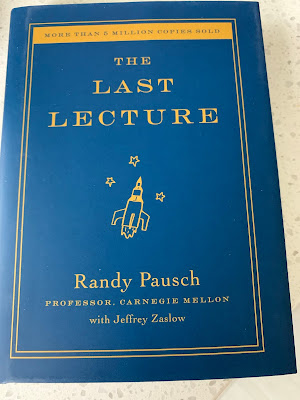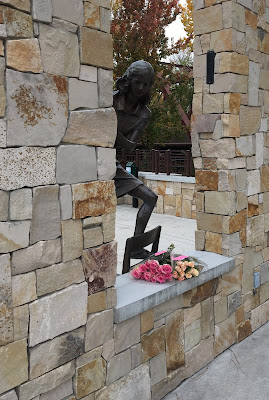I have two high school seniors graduating this June. Here are four books I thought they should take with them when they leave for college:
GMorning, GNight!: little pep talks for me and you
Lin-Manuel Miranda, author and creator of Hamilton, also writes the loveliest, most genuine, and life-affirming tweets. These nuggets are collected here in G'morning, G'night! with adorable illustrations by Jonny Sun, author of Everyone's a Aliebn When Ur a Aliebn Too.
“When the world is bringing you down, G'morning, G'night! will remind you that you are awesome.” Booklist
Make Your Bed: Little Things That Can Change Your Life ... And Maybe The World
Make Your Bed is based on Admiral William H. McRaven's commencement speech for the graduating class from the University of Austin at Texas. (check it out HERE)
"If you want to change the world … start off by making your bed."
The Last Lecture by Randy Pausch
This classic book is based on a lecture that the late professor Pausch gave at Carnegie Mellon University. The title of the lecture was "Really Achieving Your Childhood Dreams." The inside cover of the book reads "The lecture he gave wasn't about dying. It was about the importance of overcoming obstacles, of enabling the dreams of others, of seizing every moment."
"The key question to keep asking is, are you spending your time on the right things? Because time is all you have."
The Subtle Art Of Not Giving A F*ck: a counterintuitive approach to living a good life
Author Mark Manson says: You are going to die someday. Everyone you know is going to die too. And in your short life you only have a certain amount of f*cks to give.
Finding something important and meaningful in your life is the most productive use of your time and energy. This is true because every life has problems associated with it and finding meaning in your life will help you sustain the effort needed to overcome the particular problems you face. Thus, we can say that the key to living a good life is not giving a f*ck about more things, but rather, giving a f*ck only about the things that align with your personal values.
"Don't hope for a life without problems. Hope for a life with good problems."
Congratulations to all graduating seniors!
What books and tips are you sending your graduates off with?





















